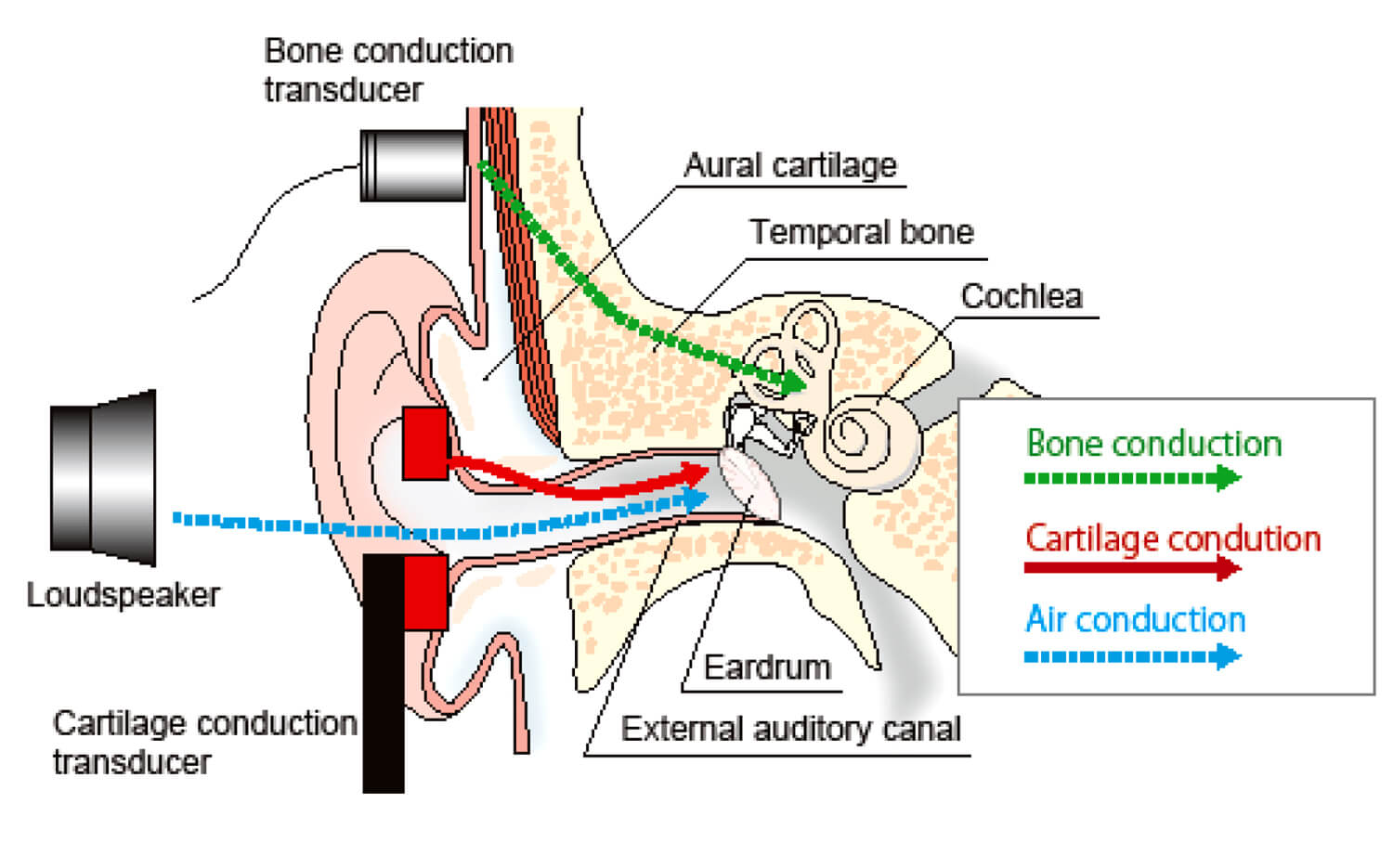HEARING AIDS
A hearing aid is a device which amplifies the sound and thus improves the hearing.
Air conduction hearing aids
Here the amplified sound is transmitted via the external auditory canal to the tympanic membrane. Types of Air conduction hearing aids
-
Body worn type: The microphone and amplifier with the battery are worn on the chest while receiver is at the ear. Used in severely deaf persons and congenital deafness. However, they are not very popular in today’s era.
-
Behind the ear: The whole hearing aid unit is worn behind the ear. Sound is transmitted to ear canal via a silicon tube or mould. This type is useful in moderate to severe hearing loss and cosmetically better. It is also easier to maintain.
-
In the Ear: The whole hearing aid is in a mould fitted in the ear canal. It is useful in mild to moderate hearing loss. Cosmetically, it is very good.
-
In the canal: This one is also called invisible hearing aid. The whole unit is in the external canal. It is useful in mild to moderate hearing loss. This has excellent cosmetic results.
-
Spectacle type: The unit is incorporated in the auricular part of spectacle frame. Not very popular.
-
Programmable hearing aids / Computerized hearing aids: These aids can be programmed according to needs of the patients and environmental conditions. They can be used in any degree of hearing loss.
Bone conduction hearing aids
The sound in these devices are transmitted to the inner ear by means of bone conduction vibrator placed on the mastoid process. Useful in severe congenital malformations.
Implantable hearing aids
Implantable middle ear hearing aids are a new category of hearing devices that work on direct drive principle. Instead of delivering acoustic energy into the external auditory canal, direct drive middle ear implant systems use mechanical vibrations delivered directly to the ossicular chain.
Environmental hearing aids:
They use the visual stimulus to alert the patient i.e. flash light on door bell ringing.
Mechanics of a hearing aid
-
Microphone: It fits into the hearing aid, collects sound energy and converts it into electrical energy.
-
Amplifier: Increases the amplitude of impulses generated.
-
Earphone: Converts electrical energy into sound.
-
Battery: Provides power supply.
-
Mould: Holds the hearing aid in place and acts like a seal.





